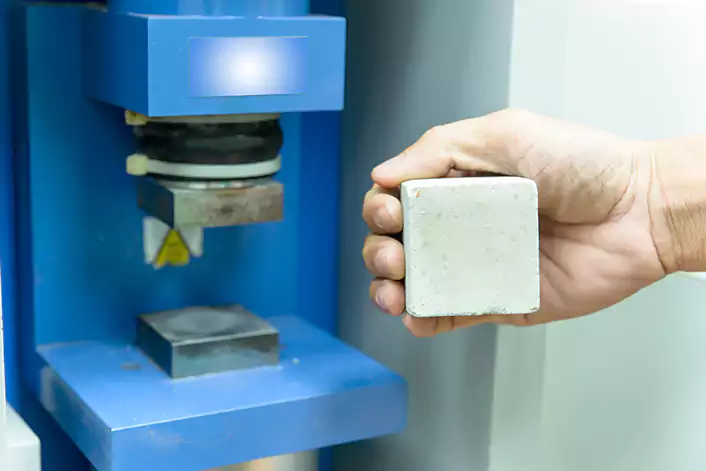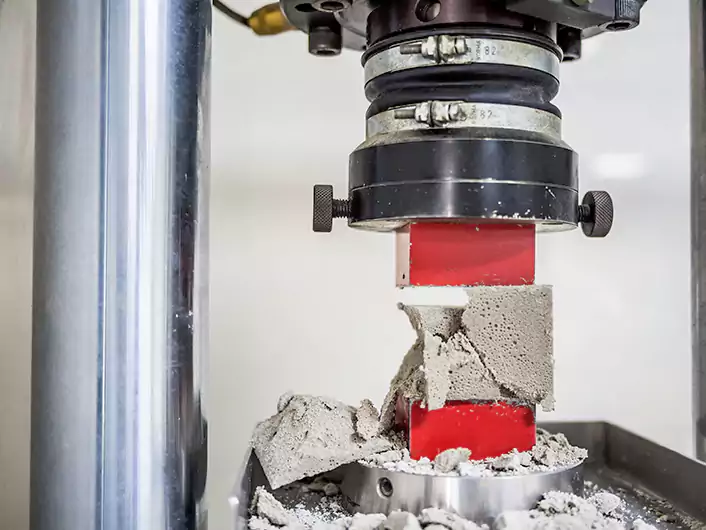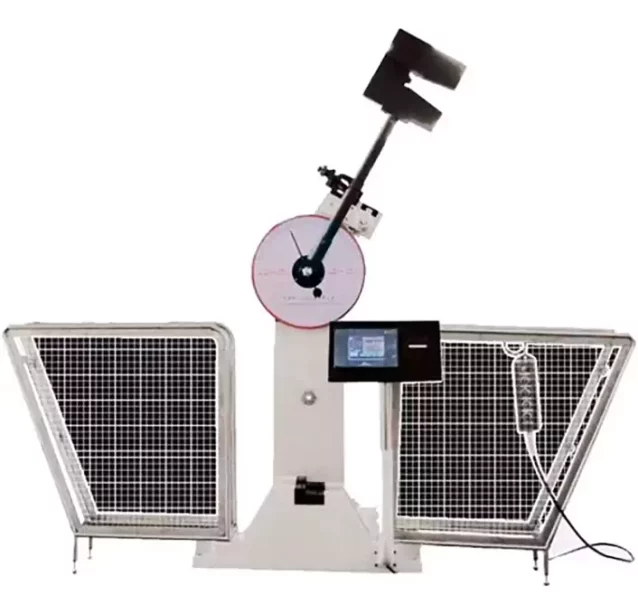The Most Common 6 Types of Mechanical Tests: What They Really Test
The term “mechanical testS” refers to the process of measuring the physical and mechanical properties of materials and components through various techniques and methods. These mechanical tests are designed to evaluate the strength, stiffness, ductility, toughness, hardness, fatigue resistance, and other characteristics of materials such as metals, polymers, ceramics, and composites. Mechanical testing is an important part of material science, engineering, and manufacturing industries, as it helps to ensure the quality, reliability, and safety of products and structures.
Importance of mechanical testing
The importance of mechanical testing lies in its ability to provide valuable information about the mechanical properties and behavior of materials under different conditions. This information can be used for various purposes, such as quality control, material selection, product development, safety and reliability, and research and development.
The procedure of a mechanical test
Mechanical testing is a broad category that includes various types of tests, each with its own specific procedure. However, the general procedure for mechanical testing typically involves the following steps:
Sample preparation
The sample is prepared according to the appropriate specifications and dimensions for the material being tested. The sample may be in the form of a specimen, component, or structure.
Mounting the sample
The sample is placed in the testing machine and secured in a manner appropriate for the specific test being conducted.
Applying load

A mechanical load is applied to the sample at a constant rate or until the sample reaches a predetermined deformation or failure point.
Recording data
The load and deformation measurements are recorded continuously throughout the test using a load cell and extensometer or other measuring devices appropriate for the specific test being conducted.
Data analysis
The data collected during the test is used to calculate various mechanical properties of the material, such as strength, stiffness, toughness, ductility, and fatigue resistance.
Interpretation of results
The results of the mechanical test are interpreted and compared to standard values or specifications for the material being tested.
6 Types of Mechanical Tests
The most common types of mechanical tests include Tensile test, Compression test, Hardness test, Impact test, Fatigue test, and Torsion test.
Tensile testing

Tensile testing is a type of mechanical test used to measure the properties of a material when subjected to tensile forces. The test involves applying a controlled load to a sample of the material, usually in the form of a dogbone-shaped specimen with a reduced cross-sectional area in the middle.
During the test, the specimen is mounted in a tensile testing machine, which applies a gradually increasing load until the material fractures or fails. The load and displacement are continuously recorded, allowing for the calculation of various properties, such as the ultimate tensile strength, yield strength, and modulus of elasticity.
The ultimate tensile strength is the maximum stress that the material can withstand before failure, while the yield strength is the stress at which the material begins to deform plastically. The modulus of elasticity is a measure of the stiffness of the material, representing the slope of the linear portion of the stress-strain curve.
Tensile testing can also be used to determine other properties of the material, such as elongation at break, ductility, and toughness. It is a common test used for quality control in manufacturing, research, and development of new materials, and design of structural components.
Compression testing

Compression testing is to measure the properties of a material when subjected to compressive forces. The test involves applying a controlled load to a sample of the material, usually in the form of a cylindrical or cubical specimen.
During the test, the specimen is mounted in a compression testing machine, which applies a gradually increasing load until the material fractures or fails. The load and displacement are continuously recorded, allowing for the calculation of various properties, such as compressive strength, elastic modulus, and deformation behavior.
Compressive strength is the maximum stress that the material can withstand before failure, while the elastic modulus is a measure of the material’s resistance to deformation under compression. The deformation behavior can be analyzed to determine factors such as the material’s Poisson ratio, which describes how the material responds to deformation in different directions.
Compression testing is commonly used for quality control in manufacturing, research, and development of new materials, and design of structural components.
Hardness testing

Hardness testing is a mechanical test used to measure the resistance of a material to indentation or deformation. It is commonly used to determine the hardness of metals, but it can also be used on other materials such as plastics, ceramics, and composites. There are several types of hardness tests, including:
Rockwell hardness test: This test measures the depth of penetration of an indenter into the surface of the material. The Rockwell hardness value is determined by the difference in depth between two measurements: one with an initial load and one with an additional load.
Brinell hardness test: This test involves applying a known load to the surface of a material using a spherical indenter. The diameter of the indentation left by the indenter is measured and used to calculate the Brinell hardness value.
Vickers hardness test: This test uses a diamond pyramid-shaped indenter to make an indentation in the material being tested. The size of the indentation is measured and used to calculate the Vickers hardness value.
Knoop hardness test: This test is similar to the Vickers test, but it uses a rhombic-shaped indenter instead of a pyramid-shaped indenter.
Shore hardness test: This test is commonly used to measure the hardness of rubber and other elastomers. The hardness is measured by the depth of penetration of a spring-loaded indenter.
Hardness testing can be used to determine the suitability of a material for a specific application, as well as to assess the quality of a material during manufacturing. It can also be used to monitor the effects of heat treatment, aging, or other environmental factors on a material’s properties.
Impact testing

Impact testing is a mechanical test method utilized to determine the properties of a material when subjected to high-speed impact forces. This test involves applying a known amount of energy to a material sample and measuring the amount of energy that is absorbed by the material before it breaks or fractures.
Various types of impact tests exist, with each test designed to measure specific material properties. The most commonly used test is the Charpy test, which involves striking a notched sample with a pendulum hammer and measuring the energy absorbed as the sample fractures.
The toughness of a material, which refers to its resistance to fracture under impact loading, can be determined by measuring the amount of energy absorbed by the material during impact testing. This information can be used to assess the material’s suitability for applications such as structural components that may experience sudden impacts or dynamic loads.
Impact testing is widely employed in industries such as aerospace, automotive, and construction, where materials must meet strict safety standards and withstand high levels of stress. It is also utilized in research and development to evaluate new materials and compare different material options for specific applications.
Fatigue testing

Fatigue testing evaluates the endurance properties of a material under cyclic loading conditions. This test is designed to measure the point at which a material will fail when subjected to repeated stress cycles over a prolonged period.
Fatigue testing is typically conducted using a fatigue testing machine that applies repeated cyclic loads to a material sample. According to different experimental requirements, the load can be tension, torsion, vibration, bending, and so on. The sample is subjected to a range of stress amplitudes, with the number of cycles and the stress level incrementally increasing until the material fails.
The data obtained from fatigue testing is used to create a fatigue curve that displays the relationship between the number of cycles and the stress level required to cause material failure. The curve is used to determine the fatigue strength of the material, which is the stress level at which the material will fail after a specified number of cycles.
Fatigue testing is essential in industries such as aerospace, automotive, and manufacturing, where components and structures are subjected to repetitive loading conditions. By conducting fatigue testing, engineers can evaluate the durability of materials and predict their lifespan under real-world operating conditions.
Torsion testing

Torsion testing measures the properties of a material under torsional or twisting loads. This test is used to evaluate the material’s strength and ductility when subjected to twisting forces and to determine its resistance to shear stress.
During torsion testing, a material sample is secured at one end and rotated around its longitudinal axis, creating a twisting motion. The torque required to twist the sample is measured, and the angle of rotation is recorded. The test is typically performed until the material fractures or reaches a specified level of deformation.
The data obtained from torsion testing is used to calculate various material properties, including torsional strength, torsional modulus of elasticity, and shear strength. These properties are important in the design of components and structures that are subjected to twisting loads, such as drive shafts, gears, and turbine blades.
Torsion testing is commonly used in industries such as aerospace, automotive, and manufacturing, where components are subjected to torsional loads. It is also used in research and development to evaluate the properties of new materials and to compare different material options for specific applications.
Conclusion
In conclusion, mechanical testing is a crucial process used to determine the properties and performance of various materials. The most common types of mechanical testing include tensile testing, compression testing, hardness testing, impact testing, fatigue testing, and torsion testing. These tests provide important information about a material’s strength, ductility, toughness, and other properties, which are critical in determining its suitability for specific applications.
By using these testing methods, manufacturers can ensure the quality and reliability of their products, while researchers can advance the development of new materials for various industries. Overall, mechanical testing plays a vital role in ensuring the safety, performance, and longevity of materials used in a wide range of applications.